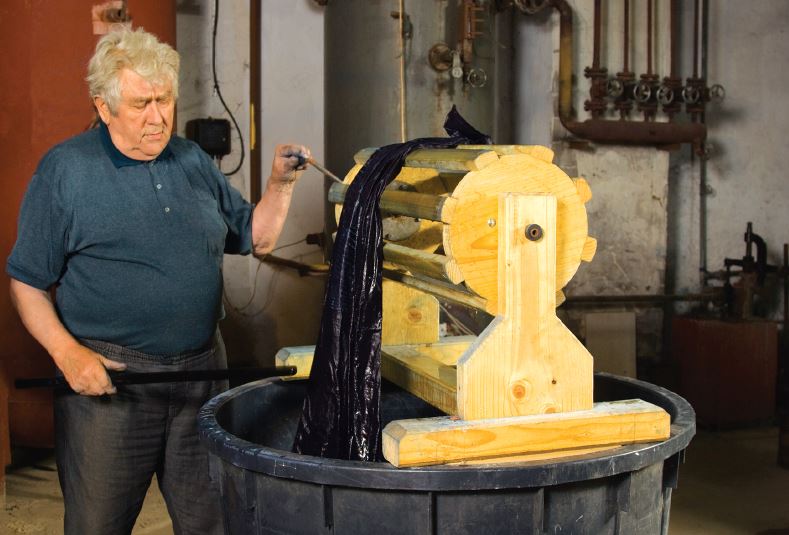A story of a blueprint shop of Stanislav Trnka
Oľga Danglová
The last of blueprint traders in Slovakia Stanislav Trnka and his wife produce blueprint products according to patterns he inherited from his ancestors. The history of Trnka shop dates back to the early 19th century, to the village of Záriečie. Trnka´s grandfarther Jaroslav Trnka inherited the blueprint shop in 1894 and moved it to the town of Púchov in 1898. Jaroslav´s sons assumed the trade after their farther in 1939. The eldest of sons Alojz run the shop until the property was nationalised in 1951. Fortunately, Alojz Trnka remained the head of the shop. Stanislav is the only one of three sons of Alojz who maintains the tradition.
The shop operated as a community service until 1972. Stanislav and his wife worked there from the mid 1960s. Cooperation with the ÚĽUV is a special chapter in the history of the shop. It is a story of mutually satisfying cooperation, combining work of an experienced artisan with innovative solutions of designers. The cooperation involved identifying new opportunities for blueprint in modern interior design and compiling fashion collections. The ÚĽUV designers (Eva Holáková, Eva Kováčová, Klára Brunovská, Jana Menkynová, Anna Pallová) borrowed from an old ornamental tradition of manual printing of a single pattern on surface or from strip moulds and ornamental edges (dining sets, tablecloths, pillows, curtains, wall calendars, fashionable clothes). Jozef Bajus entered the blueprint design at the turn of the 1980s and the 1990s. Bajus introduce stencil printing into drapery and clothes design. Stanislav Trnka, however, knew the art of stencil printing as early as in the late 1940s.
During the most fruitful years of cooperation with the ÚĽUV, Stanislav Trnka made 20.000 to 22.000 metres of blueprint fabric per year. Trnka produced several blueprint designs, too. Besides, he was an occasional lecturer of art schools students.
And the situation in the Púchov-based blueprint production today? Not very optimistic. Master Trnka had re-acquired a trading licence, but demand for blueprint products declined in the meantime. Folk ensembles and individuals order blueprint drapery from time to time. Traditional blueprint design occasionally appears in clothing or small souvenirs (rag- and straw-dolls, aromatic herb sacks). It is not enough to make living from the blueprint trade. This is perhaps the reason why none of three sons of Trnka have any interest in the blueprint trade. Now, the blueprint shop takes such occasional orders and adjusts the operation to the actual demand.
The Púchov-based blueprint shop cannot revive the mass production. It seems that the blueprint production may survive only as a natural cultural landmark.
